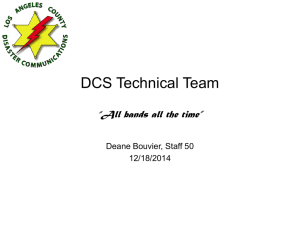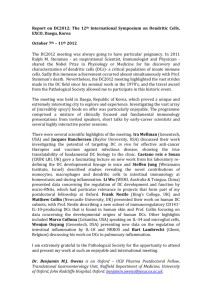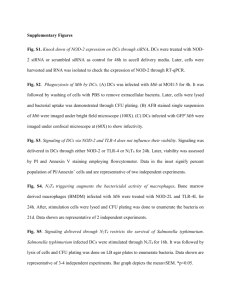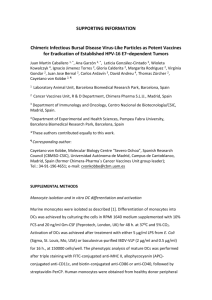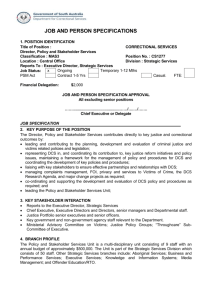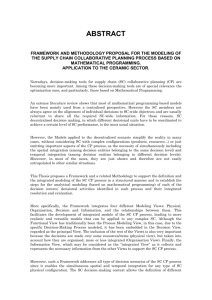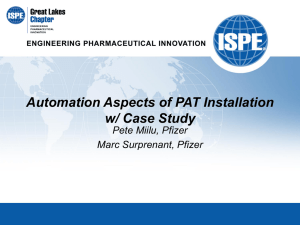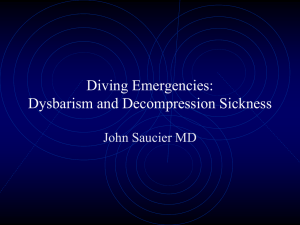高光凯减压病
advertisement
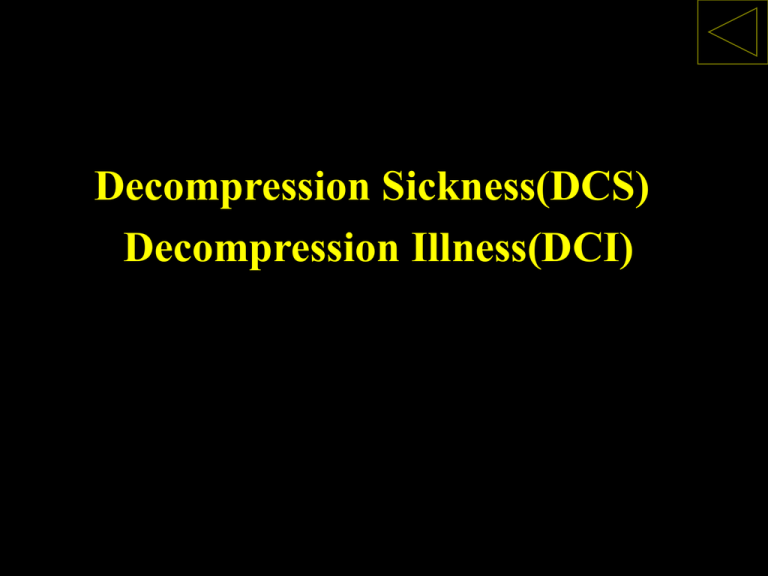
Decompression Sickness(DCS) Decompression Illness(DCI) Decompression sickness is that illness which follows a reduction in environmental pressure sufficient to cause the formation of bubbles from gases dissolved in body tissues. 当潜水员所处的 高气压环境气压快速 大幅度降低时,溶解 于体内的气体超过了 过饱和极限,以至从 溶解状态释出,形成 气泡而引起的疾病, 称为潜水减压病。 高压 常压 DCS in diving 常压 低压 •1659年 Boyle,蛇眼内气泡 •1659年 Boyle,蛇眼内气泡 •1878年 Paul Bert 动物体内气泡 N2 82-84% CO2 15.2-15.9% O2 2% • 1659年 Boyle发现蛇眼内气泡 • 1878年 Paul Bert 动物体内气泡 • 1890年 Moir用加压舱治疗减压病 • 1900年 Heller尸检发现气泡 • 1907年 Haldane制订潜水减压表 • 气泡形成的物质基础(内因) 机体内溶解的惰性气体的量足 够多(达到一定的饱和程度) • 气泡形成的环境条件(外因) 机体周围环境气压降低幅度足 够快(超过相应的过饱和极限) 0m 20s 40s 10s 100m • Diffusion • Perfusion •环境因素 低温、流速、水底性质 •机体本身的因素 饮酒、健康状况、体态、适应性、 精神状况、技术水平、过劳、瘢痕、 年龄 •操作措施方面的因素 CO2过多、等压气体逆向扩散过饱和 • 气核学说 •物理作 用 组织缺血、缺氧 血管内气泡 气栓 血管通透性升高 组织水肿 挤压组织 血管外气泡 胀破细胞 •生物化学作用 气-血界面的表面活性作用 激活Hageman 因子 蛋白质变性 凝血机能亢进 疏水性薄膜 释放活性物质 低血容量性休克 DIC 血小板聚集 血浆渗出增加 •皮肤 痒死了 痒 奇痒难忍,有灼热感或蚁走感, 犹如“隔靴搔痒”,甚至将皮肤抓 破也难解其痒。 疹(荨麻疹样丘疹、猩红热 样斑疹、skin marbling ) •运动系统 痛 •致痛机理 神经纤维末梢受压 局部缺血缺氧 活性物质释放 •部位: 肩、肘、膝、髋 •特点: 从点到面、由轻转重、 性质不一、不红不肿、止痛 无效、曲屈缓解 •神经系统(脊髓) 运动障碍:痉挛性或松弛性 麻痹、各种类型的瘫痪 感觉障碍:过敏、麻木;痛、 温、触及本体感觉迟钝或消失 •神经系统(脑) 头痛,感觉和运动功能 异常,浅反射消失,深反 射增强;语言等高级中枢 受损 临床表现 痒 疹 最难忍 最常见 痛 瘫 最奇特 最严重 症状出现的时间 35% 50% 10% 4% 1% -0.5 0.5-1 1-3 3-6 6-36 •病情轻重 国内 轻型:痒、皮疹、轻度疼痛者 中型:有较严重疼痛,或有轻度的呼 吸循环系统表现 重型:有明显呼吸循环系统表现,或 有任何神经系统表现者 国际 Type I DCS Type I DCS is characterized by pain, pruritus, skin marbling and lymphatic involvement. Type II DCS Type II DCS includes all patients who have pulmonary symptoms, hypovolemic shock or the more serious symptoms or signs of nervous system involvement. • 高气压暴露史 (特别是减压不当史) • 减压病的症状和体征 • 气泡 • 加压鉴别 我的肘 痛的很奇怪 我的皮肤 有..有..有 大理石 样斑纹 痒..痒..痒 痒的象 隔靴瘙痒 我的腿 动不了了 Recompression Treatment 定义:是指将患者送入舱内,在 适当的压力下停留一定时间,待 症状消失后,再按一定方案减压 出舱的全过程 原理 消除气泡 原理 消除气泡 纠正缺氧 压力对气泡体积和形状的影响 压力 气泡体积 1 100 100 2 50 79 4 25 63 6 16.6 55 8 12.5 50 10 46 10 直径 气泡 加压治疗 加压:速度快 高压下停留 减压 压力值的确定 主要依据: 患者症状和体征对 所加压力的反应; 参考: 潜水深度、发病时间的早 晚、症状的轻重。 • 医学教育 • 体检 • 正确选择减压方案 Today, we have talked about the decompression sickness. Bubble is the cause of DCS. The bubble formation has two essential factors: one is that the body has been exposed to hyperbaric environment at certain pressure for certain period; the other is that the ambient pressure decreases fast in large amplitude. The bubbles cause disease in two ways: direct and indirect. The direct way is obstructing blood vessels and pressing tissues; the indirect way is causing a series of biochemical reaction. The manifestation of DCS may occur in many systems. The major symptoms and signs are skin itching, limb and joint pain, sensory and motor obstruction, chokes, cardiac failure and so on. In some serious cases, the patients may die from coronary artery or brain artery gas embolism. Recompression is the most specific and effective treatment to DCS. The pressure value depends on the reactions of signs and symptoms to the recompression. To prevent divers from DCS, it is very important to properly select and strictly implement the decompression schedule. Decompression sickness, pressure related injury caused by absorbing excess nitrogen under pressure while diving; if coming up too fast and staying down too long the nitrogen will form bubbles after or during ascent that will cause pain or ill feeling or other symptoms. Thanks

